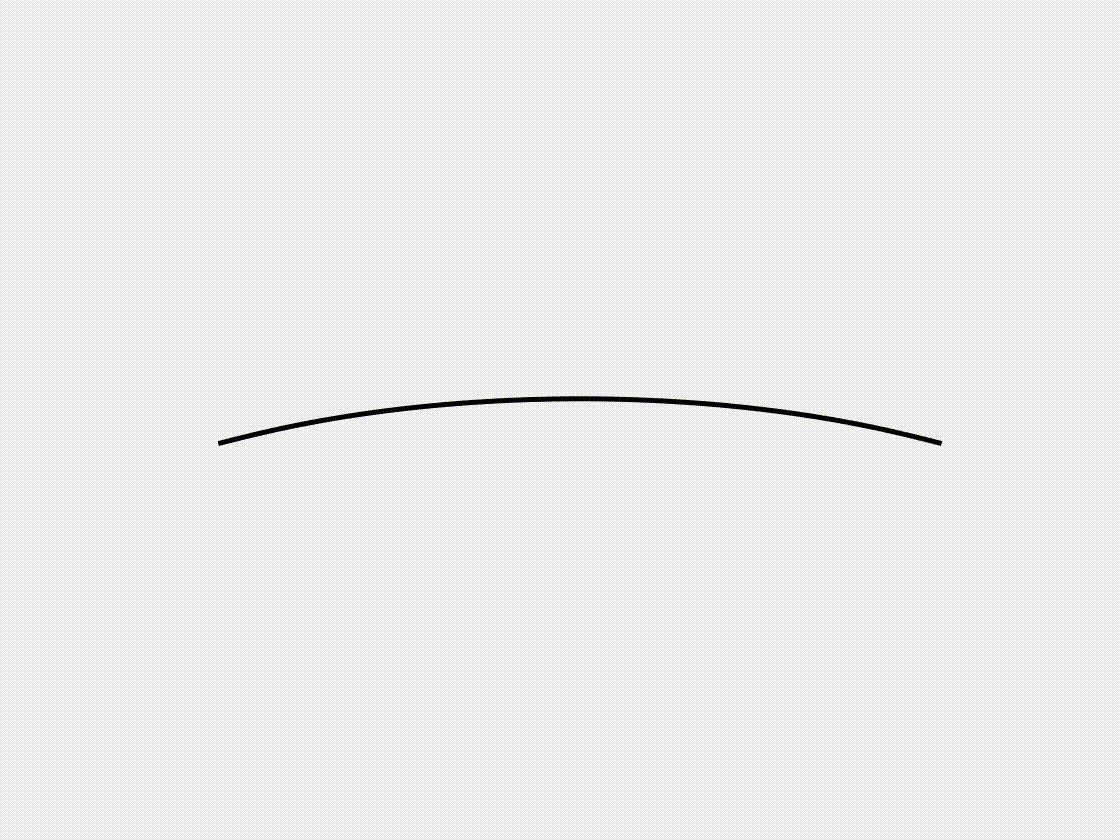Inflation of an axisymmetric plate
In this case study, we examine the inflation behavior of an axisymmetric plate under applied pressure. The \(R\) displacement of the central node is constrained based on the symmetry of deformation, and the node at the right end maintains a pin boundary. As the pressure increases, the plate deforms into a characteristic inflated dome shape. This case highlights the ability of the DDG model to accurately capture axisymmetric deformation and provides insights for modeling hyperelastic materials in future studies.
Simulation Initialization
To initialize the simulation, the following inputs are used:
- Geometry and connection:
- (i) Nodal positions: the position of the nodes, \(\mathbf{q}(t=0)\), with a total of \(N = 40\). The axisymmetric plate is initialized in a flat state with a radius \(R = 1.0 \mathrm{~m}\).
- (ii) Stretching elements: connection of every two consecutive nodes, with a total of \(N_{s} = 39\).
- (iii) Bending elements: connection of every two consecutive edges, with a total number of \(N_{b} = 38\).
- Physical parameters:
- (i) Young’s modulus, \(E = 1.0\mathrm{~MPa}\).
- (ii) Poisson’s ratio, \(\nu = 0.5\).
- (iii) Material density, \(\rho = 1000 \mathrm{~kg/m^3}\).
- (iv) Plate thickness, \(h = 0.02 \mathrm{~m}\).
- (v) Damping viscosity, \(\mu = 0.1\).
- (vi) The overall simulation is static, i.e., \(\mathrm{ifStatic} = 1\).
- Numerical parameters:
- (i) Total simulation time, \(T = 2.0 \mathrm{~s}\).
- (ii) Time step size, \(\mathrm{dt} = 0.01 \mathrm{~s}\).
- (iii) Numerical tolerance, \(\mathrm{tol} = 1 \times 10^{-4}\).
- (iv) Maximum iterations, \(N_{\mathrm{iter}} = 10\).
- Boundary conditions:
- The \(R\) displacement of the central node of the plate is constrained based on the symmetry of deformation, and the node at the right end is constrained for a pin boundary condition. Thus, the constrained array is \(\mathcal{FIX} = [1,79,80]^{T}\).
- Initial conditions:
- (i) Initial position is input from the nodal positions.
- (ii) Initial velocity is set to zeros for all nodes.
- Loading steps:
- (i) The external pressure is increasing with a loading rate, \(\dot{p} = 10.0\mathrm{~kPa/s}\).
Dynamic Rendering
